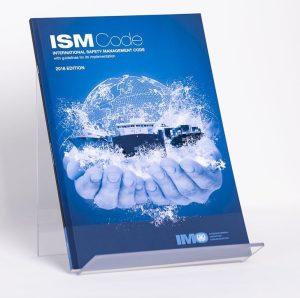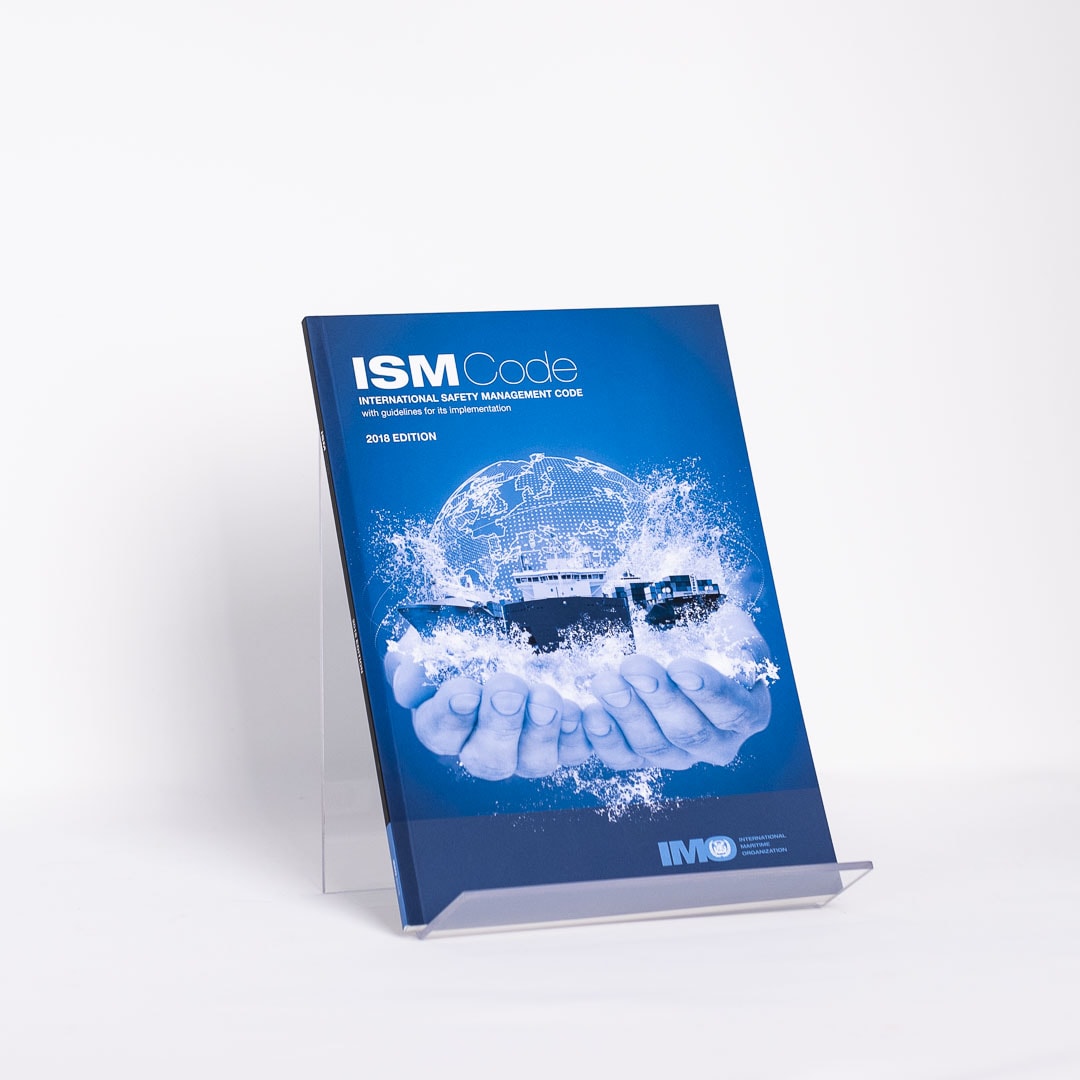The International Safety Management (ISM) Code was established to address critical issues in the maritime industry, focusing on the safe management and operation of ships, as well as pollution prevention. Its development was a gradual process, driven by a series of maritime disasters that highlighted the urgent need for a structured and comprehensive safety management approach. The ISM Code is formally linked to the SOLAS Convention (International Convention for the Safety of Life at Sea), specifically under Chapter IX (Management for the Safe Operation of Ships) and Chapter XI-2 (Special Measures to Enhance Maritime Security). These chapters mandate the implementation of Safety Management Systems (SMS) to ensure compliance with international safety standards.
Key Maritime Disasters Behind the ISM Code
 The ISM Code (International Safety Management Code) was shaped by catastrophic maritime disasters that exposed critical safety gaps, driving the need for systematic reforms:
The ISM Code (International Safety Management Code) was shaped by catastrophic maritime disasters that exposed critical safety gaps, driving the need for systematic reforms:
Herald of Free Enterprise (1987): Ferry capsized, killing 193 due to open bow doors, highlighting poor safety checks.
Exxon Valdez (1989): Oil tanker spill caused environmental and economic damage, exposing navigation and training failures.
Scandinavian Star (1990): Ferry fire killed 159, revealing inadequate fire safety and emergency response.
These tragedies led to the ISM Code, mandating Safety Management Systems (SMS) to improve safety, crew training, and environmental protection, ensuring safer maritime operations globally.
Understanding the ISM Code: A Guide for Maritime Students
 The International Safety Management (ISM) Code is a critical framework established by the International Maritime Organization (IMO) to enhance maritime safety and environmental protection. It sets forth the responsibilities of shipping companies, shipowners, and crew members to ensure safe ship operations, prevent human injury or loss of life, and mitigate risks to the marine environment.
The International Safety Management (ISM) Code is a critical framework established by the International Maritime Organization (IMO) to enhance maritime safety and environmental protection. It sets forth the responsibilities of shipping companies, shipowners, and crew members to ensure safe ship operations, prevent human injury or loss of life, and mitigate risks to the marine environment.
At the core of the ISM Code is the Safety Management System (SMS)—a structured approach to identifying, managing, and minimizing operational risks while ensuring adherence to international maritime regulations.
Objectives of the ISM Code
The International Safety Management (ISM) Code is a fundamental regulatory framework established by the International Maritime Organization (IMO) to improve maritime safety and prevent pollution from ships. Adopted under SOLAS Chapter IX, the ISM Code mandates a systematic approach to safety management by requiring shipping companies and vessel operators to develop and implement a structured Safety Management System (SMS).
Key Objectives of the ISM Code:
-
Strengthening Safety Management Systems (SMS)
The ISM Code mandates that every shipping company must establish and maintain an SMS to ensure the safe operation of ships. This includes risk management procedures, emergency preparedness, and continuous monitoring of safety performance. -
Minimizing Risks to Ships, Crew, and the Environment
The ISM Code promotes risk assessment and hazard identification to prevent accidents and injuries. It enhances the safety of seafarers, cargo, and vessels while improving operational efficiency. -
Preventing Marine Pollution
Aligning with MARPOL regulations, the ISM Code enforces environmental protection policies, including measures to reduce oil spills, air pollution, and waste discharge from ships. -
Ensuring Compliance with International Maritime Regulations
The ISM Code is a mandatory requirement under SOLAS, ensuring that ships comply with IMO conventions, flag state regulations, and port state control (PSC) inspections. -
Encouraging a Safety Culture and Continuous Improvement
The ISM Code fosters a safety-conscious work environment, requiring companies to:- Conduct regular safety drills, training programs, and internal audits.
- Implement corrective actions based on accident investigations and incident reports.
- Monitor safety performance for continuous improvement.
Structure of the ISM Code: Part A & Part B
-
Part A – Implementation: This section outlines the mandatory requirements for establishing a Safety Management System (SMS), detailing the responsibilities of companies and personnel to ensure safety and environmental protection.
-
Part B – Certification and Verification: This section provides the mandatory procedures for the certification and verification processes, ensuring compliance with the ISM Code’s standards.
Part A – Implementation
Part A of the ISM Code focuses on implementing a structured Safety Management System (SMS), which outlines the responsibilities of shipping companies and shipboard personnel. Key elements of part A are :
1. General Requirements
- Establishment of a Safety Management System (SMS) by shipping companies.
- Definition of roles, responsibilities, and authority between shore and shipboard personnel.
2. Safety and Environmental Protection Policy
- Companies must develop and implement policies for continuous improvement in safety and environmental protection.
- The policy must be communicated to all crew members and shore-based personnel.
3. Company Responsibilities and Authority
- Companies must ensure adequate resources, training, and support for safe ship operations.
- Responsibilities must be clearly defined to ensure compliance with ISM Code requirements.
4. Designated Person(s) (DPA)
- A Designated Person Ashore (DPA) must be appointed for direct communication between the ship and shore-based management.
- The DPA is responsible for monitoring the effectiveness of the SMS.
5. Master’s Responsibility and Authority
- The Master of the ship has the ultimate authority to make decisions related to ship safety.
- The Master must ensure the SMS is implemented correctly onboard.
6. Resources and Personnel
- Ships must be manned with qualified personnel who have received adequate training.
- Companies must provide necessary resources to maintain ship operations safely.
7. Shipboard Operations
- Companies must establish operational procedures for routine and emergency operations.
- Procedures must be clearly documented and accessible to crew members.
8. Emergency Preparedness
- Companies must develop procedures for emergency situations, including drills and risk assessments.
- Regular training and drills must be conducted to ensure readiness.
9. Reports and Analysis of Accidents, Incidents, and Non-Conformities
- Procedures must be in place to report and investigate accidents, incidents, and non-conformities.
- Corrective actions must be implemented to prevent recurrence.
10. Maintenance of the Ship and Equipment
- A structured maintenance program must ensure all ship equipment and machinery are operational.
- Maintenance records must be documented and reviewed periodically.
11. Documentation
- All SMS-related procedures, policies, and records must be documented.
- Proper record-keeping is essential for inspections and compliance audits.
12. Company Verification, Review, and Evaluation
- Companies must periodically review and evaluate the effectiveness of their SMS.
- Continuous improvement must be implemented based on audit findings.
Part B – Certification and Verification
Part B of the ISM Code outlines the certification, auditing, and verification processes necessary to confirm compliance with safety management requirements. Key Elements of Part B are:
1. Certification and Periodical Verification
- A Document of Compliance (DOC) is issued to shipping companies after their SMS has been audited and found compliant.
- A Safety Management Certificate (SMC) is issued to ships, confirming that they operate in accordance with the approved SMS.
2. Interim Certification
- Interim DOC and SMC may be issued to newly established companies or newly delivered ships, allowing them time to establish a compliant SMS.
3. Verification
- Initial verification is conducted to assess SMS implementation before issuing certificates.
- Periodic audits ensure continued compliance.
- Renewal verification must be conducted before the expiration of certificates.
4. Forms of Certificate
- The ISM Code defines the required certificates, including the Document of Compliance (DOC) and Safety Management Certificate (SMC), which must be onboard for inspections.
The ISM Code is a cornerstone of modern maritime safety and environmental protection. Part A emphasizes the establishment of a robust Safety Management System, while Part B ensures its ongoing compliance through certification and verification. For maritime students, mastering the ISM Code is not just an academic requirement but a critical skill for future careers in the shipping industry. By adhering to the principles of the ISM Code, the maritime community continues to strive toward safer seas and a cleaner environment.


